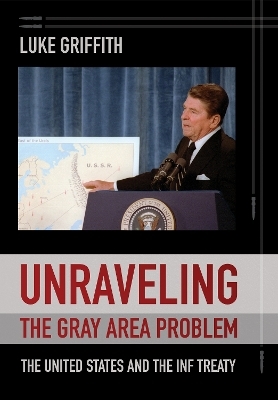
Unraveling the Gray Area Problem
The United States and the INF Treaty
Seiten
2023
Cornell University Press (Verlag)
978-1-5017-7306-8 (ISBN)
Cornell University Press (Verlag)
978-1-5017-7306-8 (ISBN)
In Unraveling the Gray Area Problem, Luke Griffith examines the US role in why the Intermediate-Range Nuclear Forces (INF) Treaty took almost a decade to negotiate and then failed in just thirty years. The INF Treaty enhanced Western security by prohibiting US and Russian ground-based missiles with maximum ranges of 500 to 5,500 kilometers. Significantly, it eliminated hundreds of Soviet SS-20 missiles, which could annihilate targets throughout Eurasia in minutes. Through close scrutiny of US theater nuclear policy from 1977 to 1987, Griffith describes the Carter administration's masterminding of the dual-track decision of December 1979, the North Atlantic Treaty Organization (NATO) initiative that led to the INF Treaty. The Reagan administration, in turn, overcame bureaucratic infighting, Soviet intransigence, and political obstacles at home and abroad to achieve a satisfactory outcome in the INF negotiations.
Disagreements between the US and Russia undermined the INF Treaty and led to its dissolution in 2019. Meanwhile, the US is developing a new generation of ground-based, INF-type missiles that will have an operational value on the battlefield. Griffith urges policymakers to consider the utility of INF-type missiles in new arms control negotiations. Understanding the scope and consistency of US arms control policy across the Carter and Reagan administrations offers important lessons for policymakers in the twenty-first century.
Disagreements between the US and Russia undermined the INF Treaty and led to its dissolution in 2019. Meanwhile, the US is developing a new generation of ground-based, INF-type missiles that will have an operational value on the battlefield. Griffith urges policymakers to consider the utility of INF-type missiles in new arms control negotiations. Understanding the scope and consistency of US arms control policy across the Carter and Reagan administrations offers important lessons for policymakers in the twenty-first century.
Luke Griffith is Professor of Government and History at New Mexico Junior College.
Introduction: Abolitionist Dreams
1. A Crisis of Confidence: Bungling the Neutron Bomb
2. Neither "Mad Dogs" nor "Reluctant Dragons": The Guadeloupe Summit
3. Carter in Command: Devising the Dual-Track Decision
4. Between "Green Cheese" and "the Moon": The Reagan Administration and the Zero Option
5. Engaging the "Defective Vending Machine": The Reagan Administration and the INF Negotiations
6. For Matrimony or Alimony? Reagan, Gorbachev, and the INF Endgame
7. Conclusion: "Trust but Verify"
Epilogue: From George H. W. Bush to Donald Trump
| Erscheinungsdatum | 02.11.2023 |
|---|---|
| Zusatzinfo | 10 Halftones, black and white |
| Verlagsort | Ithaca |
| Sprache | englisch |
| Maße | 152 x 229 mm |
| Gewicht | 907 g |
| Themenwelt | Natur / Technik ► Fahrzeuge / Flugzeuge / Schiffe ► Militärfahrzeuge / -flugzeuge / -schiffe |
| Geschichte ► Allgemeine Geschichte ► Neuzeit (bis 1918) | |
| Geschichte ► Allgemeine Geschichte ► Zeitgeschichte | |
| Geisteswissenschaften ► Geschichte ► Regional- / Ländergeschichte | |
| Sozialwissenschaften ► Politik / Verwaltung | |
| ISBN-10 | 1-5017-7306-2 / 1501773062 |
| ISBN-13 | 978-1-5017-7306-8 / 9781501773068 |
| Zustand | Neuware |
| Informationen gemäß Produktsicherheitsverordnung (GPSR) | |
| Haben Sie eine Frage zum Produkt? |
Mehr entdecken
aus dem Bereich
aus dem Bereich
colonial violence and new landscapes of resistance
Buch | Softcover (2024)
Pluto Press (Verlag)
CHF 39,95
how the Pentagon and Silicon Valley are transforming the future of …
Buch | Hardcover (2024)
Simon & Schuster (Verlag)
CHF 34,90


